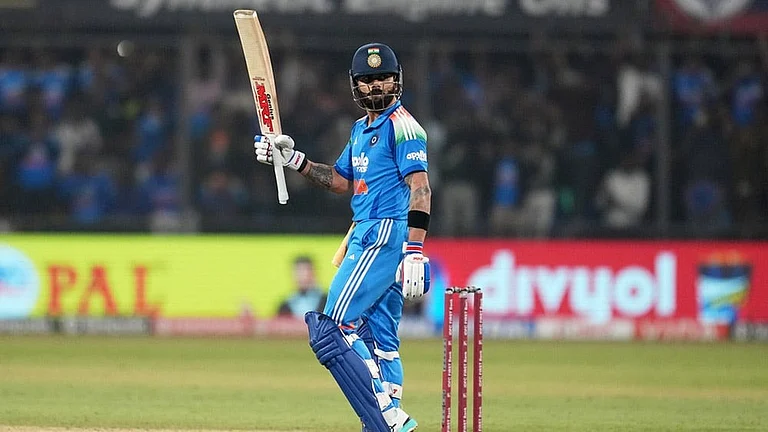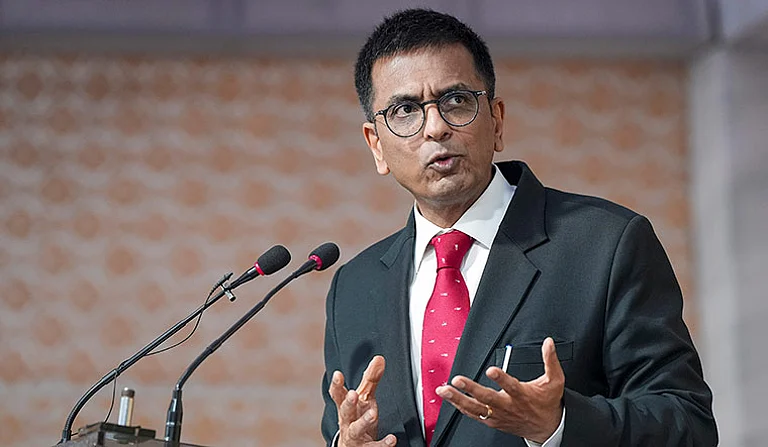While the victory of the Congress party in Karnataka is being considered as a major achievement for the grand old party looking forward to stall the saffron wave in 2024 general elections, the unaffected vote share of the Bharatiya Janata Party (BJP) in the state may be a matter of concern.
At the time of writing, the BJP has almost kept intact its earlier tally of around 36 per cent votes that they had gained in 2018. Does it mean that the BJP has successfully kept its hold on its core constituency? If it does, what is the core constituency of the BJP?
Whereas the granular constituency and region-based data would give a more comprehensive understanding as it comes out, for now, it seems that in a few regions, the BJP’s vote share has grown at the cost of the JD(S). In Bengaluru, the BJP’s vote share has increased significantly by 6 per cent whereas there is a fall in the JD(S)’ vote share by 8 per cent. However, the same doesn’t hold true for Southern Karnataka where the fall in JD(S)’ vote share by around 8 per cent benefitted the Congress. The highest fall for the BJP could be found in Kittur Karnataka region where they lost around 4 per cent vote share.
However, in coastal Karnataka, where the BJP fought the elections over halal and hijab issues, the party almost kept its earlier vote share intact, pegging it at around 47 per cent. Overall, the loss of the BJP in all regions are seemingly marginal, and whatever losses they suffered in the rest of the state were compensated by its significant growth in Bengaluru. To realise the BJP’s intact core constituency, one has to look into the history of its emergence in the southern state.
How did the Lotus bloom in Karnataka?
Known as a Congress bastion for decades, Karnataka, for the first time, got a non-Congress government in 1983, when the Janata Party got a slim majority and Ramakrishna Hegde became Chief Minister. Although the Janata Party had suffered several splits, the Janata Dal (Secular), or JD(S), under the leadership of HD Deve Gowda, survived the blow and continued to have its dominance in some parts of southern Karnataka that later benefited the BJP.
It was only in the 1991 General Elections that the BJP won four seats in the state: Bidar, Tumakuru, Bengaluru South, and Mangaluru and became a formidable political force in Karnataka. In the days that followed, what worked for the party led by BS Yeddiurappa and Ananth Kumar was their strategy to pander to the Lingayat vote bank. In the 1994 state Assembly Elections, the party won 40 seats out of 224 — a good start that shaped the political discourse of the next two decades. Scholars are of the opinion that the disgruntlement towards the Congress stemmed from the perception that it only worked for the Vokkaliga and the minority communities.
The Lingayat community constitutes around 17-19 per cent vote share of Karnataka. It is said that Rajiv Gandhi’s handling of the then Congress CM Veerandra Patil who had a strong base among Lingayats in the state, also affected the popularity of the Gandhis. Patil was removed as the CM when he was severely ill. Political analysts, however, note that it was his defiance toward the high command that brought upon him the ill fate.
This factor of the Lingayat community and its treatment by the Congress gave the BJP an electoral boost, and in the 1998 General Elections, it got 13 Lok Sabha seats and made dents into several Congress citadels such as Gulbarga (Kalaburagi), Kanakpura, Mysuru-Kodagu, Udupi, Chikkamagaluru, Shivamogga and Belagavi. Thereafter, the growth of the BJP was mostly unhindered.
In 2004, the BJP won 18 out of 28 seats followed by 19 and 17 in 2009 and 2014, respectively. In 2019, when the ‘Modi Wave’ swept away voters across the country, the number for the BJP in Karnataka stood at 25, decimating Congress to one Lok Sabha seat.
Did BJP lose to developmental narratives?
Against this backdrop, if one looked at the recent developments in Karnataka, there are three factors that perhaps have worked against the BJP. The first one is the party’s treatment of Lingayat strongman BS Yeddiyurappa who had to resign from the post of chief minister in 2021 when the saffron party installed Basavaraj Bommai as the CM.
This was almost a ‘Patil moment’ as it was for the Congress in the 1990s. As Yeddiyurappa broke down in tears while tendering his resignation, the support of the Lingayats also got affected.
Secondly, it was the campaign strategy of the Congress which focussed on developmental planks instead of following the Hindutva trope of the BJP. According to political scientist Ajay Gudavarthy, the entire campaign of the BJP, for a long time, was centred on issues pertaining to halal and hijab. It was only close to Election Day that they started talking of development.
“This shift is what one has to look at. Even Bommai, in one of his interviews, had said that halal and hijab are not electoral issues. Does it signify that the electorate was not ready to accept the polarising agenda?” asks Gudavarthy.
But does it actually affect the core vote bank of the BJP?
Gudavarthy says, “This is the tricky part. The urban middle class has voted for BJP. But there is a shift among the youth and the women who subscribed to Congress’s policies for women, employment for youths etc.”
The core vote bank of the BJP can be on caste lines overlaid by the appeals of Hindutva that have stayed loyal to it, he adds.
Mujibur Rahman, a political scientist and scholar on secularism, says, “The Congress has got a lot of votes from the JD(S), consequently pushing its vote share.”
Notably in Kalyan Karnataka, Kittur Karnataka and the Southern region, the vote share of the Congress has increased by almost 6 per cent, 5 per cent, and 8 per cent, respectively at the cost of the JD(S)’s fall by around 4 per cent, 2 per cent, and 8 per cent. So, the committed grassroot campaigns of Congress worked well for the party, Rahman notes.
On the part of the BJP, Rahman says that the party knew the outcome well and thus followed two strategies to confront the anti-incumbency.
“The first is the replacement of candidates and the second is the effort to polarise the voters,” he adds. But the diligent campaign of Congress foiled both of them.
Will there be any implications for 2024?
Still, the major question remains whether this result would have any impact on the upcoming general elections of 2024. Rahman is not very optimistic.
“In 2019, the Congress won Madhya Pradesh and Rajasthan but they couldn’t convert the voter base in the parliamentarian election. If the party has to keep the flow, it has to continue working hard on the ground to reap its benefits,” says Rahman.
The BJP would have to implement fresh strategies to combat the 2024 elections, adds the author of Communalism in Postcolonial India: Changing Contours.
Gudavarthy, whose recent book Politics, Ethics and Emotions in New India, talks about how emotions get mobilised in politics, sees “a ray of hope” in 2024 if Congress gained a comfortable victory with more than 140 seats.
“If it gets more than 140 seats, people residing in different parts of the country may rethink their decision and can start considering the Congress as an alternative,” says Gudavarthy. As of now, the Congress has a lead in 136 seats, already the biggest victory of any party in the state in the last four decades.
The third and final reason for the drubbing the BJP received in the Karnataka Assembly elections of 2023 may be the lack of popularity of Bommai. While in the North Indian states, the BJP consecutively swept the polls on Modi’s popularity, in the case of Karnataka, it could not replicate that result in Karnataka.
“Bommai doesn’t have even influence beyond his own constituency. How could he garner support across the state?” asks Gudavarthy.
While these three factors have worked against the BJP, there is one factor that perhaps can work as an encouragement, and that is their result in the coastal belt where the Hindutva narratives have worked very well. As the BJP leadership promises to introspect the results to find out possible loopholes, it is the Congress party’s turn to translate their voter base in the upcoming general elections.



























